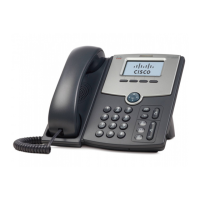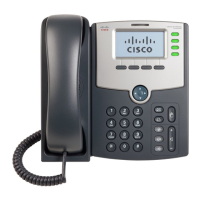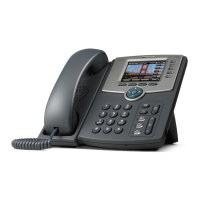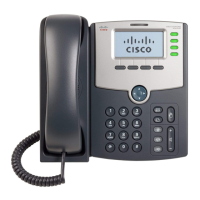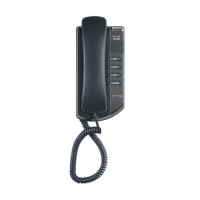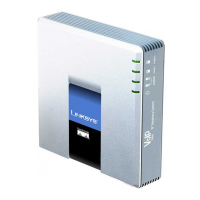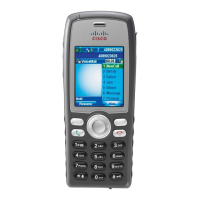Advanced Scripting for Cadences, Call Progress Tones, and Ring Tones
Cisco Small Business SPA300 Series, SPA500 Series, and WIP310 IP Phone Administration Guide 182
7
Di is the total duration of the section in seconds. All durations can have up to
3 decimal places to provide 1 ms resolution. The wildcard character “*”
stands for infinite duration. The segments within a section are played in
order and repeated until the total duration is played.
Example: Normal Ring
60(2/4)
Number of Cadence Sections = 1
Cadence Section 1: Section Length = 60 s
Number of Segments = 1
Segment 1: On=2s, Off=4s
Total Ring Length = 60s
Example 2: Distinctive Ring (short,short,short,long)
60(.2/.2,.2/.2,.2/.2,1/4)
Number of Cadence Sections = 1
Cadence Section 1: Section Length = 60s
Number of Segments = 4
Segment 1: On=0.2s, Off=0.2s
Segment 2: On=0.2s, Off=0.2s
Segment 3: On=0.2s, Off=0.2s
Segment 4: On=1.0s, Off=4.0s
Total Ring Length=60s
A ToneScript is a mini-script that specifies the frequency, level and cadence
parameters of a call progress tone. It can contain up to 127 characters. The syntax
follows:
FreqScript;Z1[;Z2]. The section Zi is similar to the Si section in a CadScript
except that each on/off segment is followed by a frequency components
parameter: Zi = Di(oni,1/offi,1/fi,1[,oni,2/offi,2/fi,2 [,oni,3/offi,3/fi,3 [,oni,4/
offi,4/fi,4 [,oni,5/offi,5/fi,5 [,oni,6/offi,6/fi,6]]]]])
where fi,j = n1[+n2]+n3[+n4[+n5[+n6]]]]] and 1 < nk < 6 indicates which of the
frequency components given in the FreqScript are used in that segment; if
more than one frequency component is used in a segment, the components
are summed together.
Example: Dial Tone
350@-19,440@-19;10(*/0/1+2)
Number of Frequencies = 2
Frequency 1 = 350 Hz at –19 dBm
Frequency 2 = 440 Hz at –19 dBm
Number of Cadence Sections = 1
Cadence Section 1: Section Length = 10 s
Number of Segments = 1
Segment 1: On=forever, with Frequencies 1 and 2

